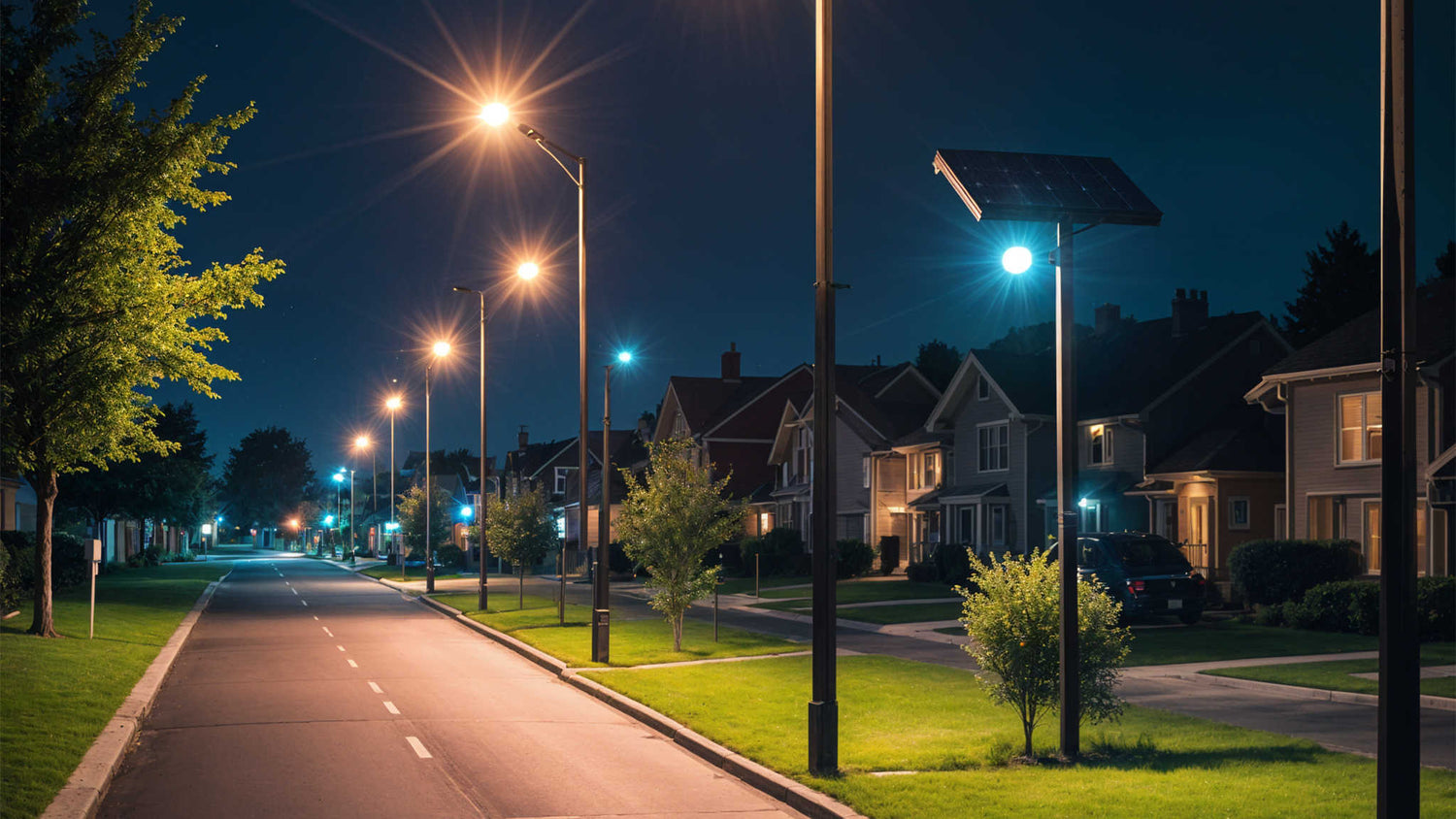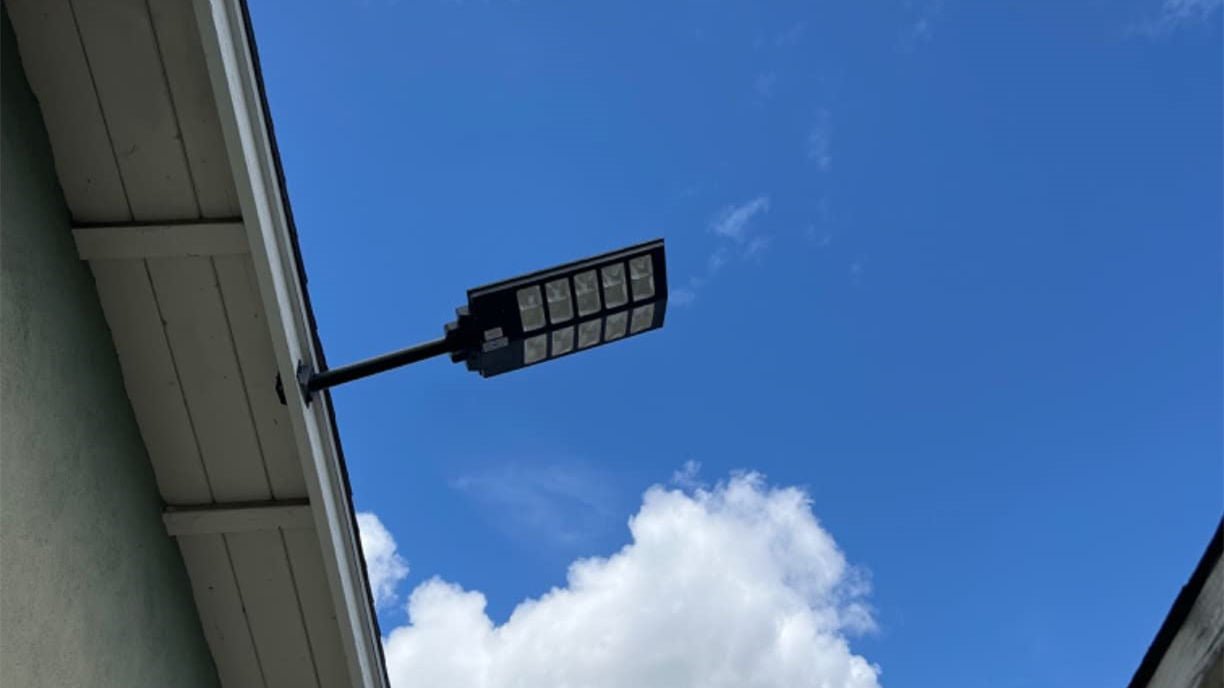Solar street lights have become increasingly popular due to their energy efficiency and environmental benefits. When choosing solar street lights, one of the key decisions you need to make is whether to opt for aluminum or plastic construction. Both materials have their own advantages and disadvantages, and the best choice depends on a variety of factors, including durability, cost, maintenance, and application. In this blog, we'll delve into the differences between aluminum and plastic solar street lights to help you make an informed decision.
Durability and Longevity
Aluminum Solar Street Lights:
Aluminum is known for its durability and strength. Solar street lights made from aluminum are resistant to corrosion, rust, and other environmental factors that can degrade the material over time. This makes them an excellent choice for areas with harsh weather conditions, such as coastal regions with high humidity and salt exposure or places with extreme temperatures.
The longevity of aluminum street lights is another significant advantage. They can last for decades with minimal maintenance, which can translate to long-term cost savings. The robust nature of aluminum means that it can withstand physical impacts better than plastic, making it less likely to crack or break.
Plastic Solar Street Lights:
Plastic solar street lights, on the other hand, are generally less durable than their aluminum counterparts. While advancements in plastic technology have led to the creation of more resilient and UV-resistant plastics, they still do not match the durability of aluminum. Over time, plastic can become brittle and more susceptible to damage from UV exposure, temperature fluctuations, and physical impacts.
However, high-quality plastics designed specifically for outdoor use can offer reasonable durability for certain applications, especially in environments with milder weather conditions. Additionally, some plastic street lights are reinforced with fiberglass or other materials to enhance their strength.
Cost
Aluminum Solar Street Lights:
One of the main drawbacks of aluminum solar street lights is their cost. Aluminum is more expensive to manufacture and process, leading to a higher initial investment compared to plastic. However, the higher upfront cost can be offset by the longer lifespan and lower maintenance requirements of aluminum lights.
Plastic Solar Street Lights:
Plastic solar street lights are typically more affordable than aluminum ones. The lower cost of plastic manufacturing makes these lights an attractive option for projects with budget constraints or for use in areas where vandalism or theft might be a concern. While plastic lights may require more frequent replacement, their lower price point makes them a cost-effective solution for certain applications.

Maintenance
Aluminum Solar Street Lights:
Maintenance is another area where aluminum shines. Due to its resistance to corrosion and weathering, aluminum requires less frequent maintenance compared to plastic. This can be particularly beneficial in remote or hard-to-access areas where regular maintenance visits are challenging. The reduced need for maintenance not only saves time but also lowers overall maintenance costs.
Plastic Solar Street Lights:
Plastic solar street lights generally require more maintenance, especially in harsh environmental conditions. They are more prone to damage from UV rays, which can cause the plastic to degrade and become brittle over time. Regular cleaning and inspection are necessary to ensure that the lights remain functional and to address any damage before it becomes severe.
Weight
Aluminum Solar Street Lights:
Aluminum is a lightweight metal, which makes aluminum solar street lights relatively easy to install and transport. The lightweight nature of aluminum can also reduce shipping costs and simplify the installation process, especially in locations that are difficult to access.
Plastic Solar Street Lights:
Plastic is even lighter than aluminum, which can further simplify transportation and installation. The lightweight nature of plastic street lights makes them particularly suitable for temporary installations or applications where frequent relocation is necessary. However, the lighter weight can also make them more susceptible to being blown over or damaged by strong winds if not properly secured.

Environmental Impact
Aluminum Solar Street Lights:
Aluminum is a highly recyclable material. Recycling aluminum requires significantly less energy compared to producing new aluminum from raw materials, making it an environmentally friendly option. The long lifespan of aluminum street lights also means fewer replacements and less waste over time.
Plastic Solar Street Lights:
Plastic, while also recyclable, poses more environmental challenges. The recycling process for plastic is less efficient, and not all types of plastic are recyclable. Additionally, plastic production relies heavily on fossil fuels, contributing to greenhouse gas emissions. However, efforts are being made to develop more sustainable and recyclable plastic materials.
Aesthetics and Design
Aluminum Solar Street Lights:
Aluminum offers a sleek and modern appearance, which can enhance the aesthetic appeal of urban environments. The material's strength allows for the creation of slim and elegant designs without compromising durability. Additionally, aluminum can be anodized or powder-coated in various colors, providing a range of customization options.
Plastic Solar Street Lights:
Plastic street lights can also be designed to be aesthetically pleasing, with a variety of shapes, colors, and finishes available. However, plastic may not offer the same premium look as aluminum. Some plastic lights are designed to mimic the appearance of traditional metal lights, but the difference in quality can often be discerned upon closer inspection.
Application Suitability
The choice between aluminum and plastic solar street lights ultimately depends on the specific application and environment.
Ideal Scenarios for Aluminum Solar Street Lights:
- Coastal areas or regions with high humidity and salt exposure.
- Urban environments where durability and aesthetics are important.
- Locations with extreme weather conditions.
- Projects with a focus on long-term investment and low maintenance.
Ideal Scenarios for Plastic Solar Street Lights:
- Temporary or semi-permanent installations.
- Areas with milder weather conditions.
- Projects with budget constraints.
- Locations where theft or vandalism is a concern.
Conclusion
Both aluminum and plastic solar street lights have their own advantages and are suitable for different applications. Aluminum lights offer superior durability, longevity, and a premium appearance, making them ideal for harsh environments and long-term installations. On the other hand, plastic lights are more affordable, lightweight, and easier to install, making them suitable for temporary installations and areas with budget constraints.
When deciding between aluminum and plastic solar street lights, consider the specific needs of your project, including environmental conditions, budget, maintenance requirements, and aesthetic preferences. By carefully evaluating these factors, you can choose the best material to ensure reliable and efficient lighting for your application.


































Leave a comment
This site is protected by hCaptcha and the hCaptcha Privacy Policy and Terms of Service apply.